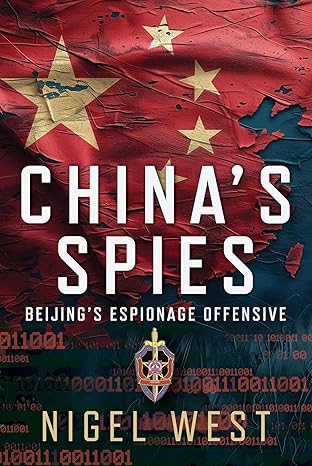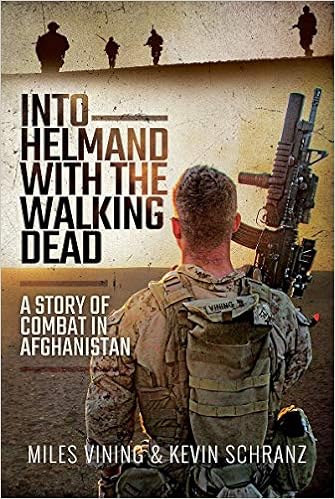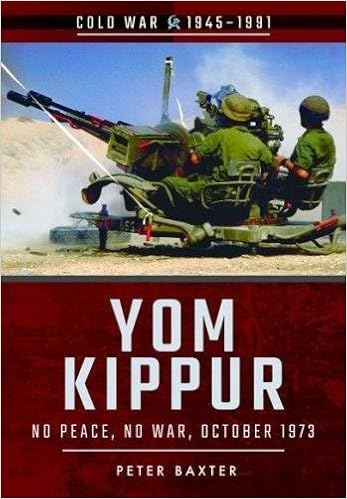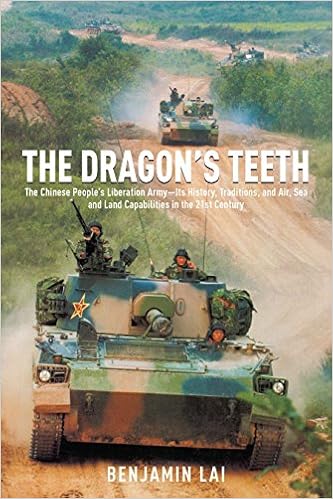Egypt's Canal Zone Guerrillas: The "Liberation Battalions" and Auxiliary Police, 1951-1954
By Christopher Weeks
 At the end of the Second World War, Britain faced the increasingly difficult prospect of maintaining control over the Suez Canal in the face of rising Egyptian opposition and the economic realities of the post-war world. In attempting to exert its authority over the Canal Zone, Britain came up against a guerrilla movement fed both by nationalist and religious sentiment, and facilitated by a weak monarchy and a confrontational opposition government. The 1950-54 battle over the Canal Zone set the stage for the creation of an independent Egypt and the 1956 Suez crisis.
At the end of the Second World War, Britain faced the increasingly difficult prospect of maintaining control over the Suez Canal in the face of rising Egyptian opposition and the economic realities of the post-war world. In attempting to exert its authority over the Canal Zone, Britain came up against a guerrilla movement fed both by nationalist and religious sentiment, and facilitated by a weak monarchy and a confrontational opposition government. The 1950-54 battle over the Canal Zone set the stage for the creation of an independent Egypt and the 1956 Suez crisis.
Anti-British sentiment ran high in Egypt in the 1930s and 1940s, particularly in the Suez Canal Zone. By the terms of the 1936 treaty the Canal Zone could be occupied by 10,000 British troops, but during the Second World War, the British presence in the Canal Zone grew substantially, and remained large after the war, standing at 38,000 troops in 1951.[1] Egyptians had for decades conducted sporadic acts of theft, vandalism and assaults on the British in the Canal Zone, sometimes threatening the nearly 100,000 Egyptian employees of the British. These incidents were driven by personal and criminal motives, but took on a more organized, nationalistic character after the end of the Second World War. With the war won, many Egyptians wondered why the British should continue to maintain a large military presence along the Canal.
The Muslim Brotherhood Takes the Lead
In 1947, Egypt’s Muslim Brotherhood, which enjoyed legal status but an uneasy and confrontational relationship with the government of King Farouk, organized a volunteer group to fight Jewish settlers in Palestine. Known as the “Army of Liberation,” this group was commanded by an Egyptian Army lieutenant colonel on a leave of absence, and openly supported by other officers who provided training and equipment. When the Israeli War of Independence ended in 1949, some Muslim Brotherhood volunteers turned their attention back home, to opposing the monarchy and, more importantly, the British military, which they saw as both occupying their country and supporting the king.
Indeed, as early as September 1947, a British journalist reported that the Brotherhood was organizing “liberation battalions” (the earliest known use of the term) to drive the British from Egypt. The Brotherhood claimed 80,000 volunteers had joined these units, a wild exaggeration; there is no evidence of any such Brotherhood organizations until 1950. In any case, violence against Britons was increasing, much of it in the Canal Zone.[2]
The Liberation Battalions started their organized campaign against British forces and Egyptian employees in the Canal Zone during 1950, under the overall direction of Sheikh Mohammed Farghali. A senior Brotherhood figure, Farghali had fought in Israel with the Army of Liberation.[3] The city of Zagazig, in the Nile Delta about 40 miles from both Cairo and the city of Ismailia on the Suez Canal, became the main center of operations for the Brotherhood volunteers.[4] Though the Liberation Battalions started attracting public attention, and some admiration, their actual activities remained extremely low-level throughout 1950 and most of 1951.
Government Response: The Auxiliary Police
In 1950, a new government was formed under the opposition Wafd Party, which was both anti-British and anti-Farouk. It was also firmly secular, and as such was concerned about the rising popularity of the Brotherhood, which it viewed as a rival for the leadership of a post-Farouk Egypt. After a year of stalled negotiations to remove the British from the Canal Zone, and rising public pressure, the government announced on 9 October 1951 that it was withdrawing from the Suez Canal Treaty. This was the trigger that set off a guerrilla war along the Canal, which the Wafd Party struggled to control.
Celebrating the government’s newly confrontational attitude towards the British, most of the Egyptian workers in the Canal Zone went on strike. They looted and burned the NAAFI storehouses in Ismailia on 16 October. A British soldier was stabbed, and two Egyptians killed in clashes. Volunteers rushed to join the Liberation Battalions, and the Muslim Brotherhood branch in Ismailia declared a jihad against the British.[5]
Having failed to control the riots in Ismailia, the Interior Ministry dispatched about 1500 Auxiliary Police (Bulak Nizam) from Cairo to reinforce the regular police. Normally unarmed, the Auxiliary Police were an anti-riot force, and as the main force used to suppress nationalist protests, had a poor public image. Interior Minister Fuad Serag al-Din Ibrahim, a Wafd member, knew this all too well; conscious of the Brotherhood’s popularity, he wanted the Auxiliary Police to take the lead in the anti-British attacks. The Auxiliary Police who arrived in Ismailia were armed, and had no intention of suppressing any riots.[6]
Government Response: The Student Volunteers
 Nationalists demonstrated across Egypt, demanding arms and training to fight the British. The Wafd government was put in difficult position. It had to capitalize on public sentiment, undermine but not anger the Brotherhood, appear to rein in the guerrillas, and still oppose the British.
Nationalists demonstrated across Egypt, demanding arms and training to fight the British. The Wafd government was put in difficult position. It had to capitalize on public sentiment, undermine but not anger the Brotherhood, appear to rein in the guerrillas, and still oppose the British.
On 21 October the government created a “Battalions Command Council” under former Army Chief of Staff Aziz al-Masri, to coordinate all guerrilla activity in the Canal Zone.[7] The Wafd Party also began recruiting its own battalions, the Mustafa Nahhas and Saad Zaghloul battalions, composed of Fuad I University students.[8] Students at the American University in Cairo announced in late December that they would also form a battalion.[9] Despite government and press portrayals, at least some members were Brotherhood members or supporters.
Interior Minister Serag al-Din downplayed the government’s direct involvement with the battalions, saying they were a nation-wide movement and would be tolerated as long as they stayed within the bounds of the law. The government “would not shield itself behind such a movement,” he disingenuously claimed.[10] A Cabinet statement hinted at its displeasure with the Brotherhood when it offered appreciation for the sacrifice and patriotism of Egypt’s youth, but regretted that “undesirable characters have come into the movement.”[11]
Al-Masri and his Command Council proved unable to wrest control of the battalions away from the Brotherhood, however. In mid-November, the Interior Ministry directly took over their training, administration and operations, and ordered all private financial donations be made through the Cabinet. Three training camps, run by Army reservists, would be created.[12] Restrictions on civilian possession of firearms were lifted, a legal formality but an important symbolic move.[13] Many saw these moves as hindering rather than helping the Liberation Battalions, appeasing the British and undermining the Brotherhood. Hundreds of students protested outside the Interior Ministry, and the leader of the Brotherhood proclaimed that he would not submit to government control.[14]
The first 50 student volunteers completed two weeks of training with a public graduation at Cairo’s Fuad I University on 20 December, displaying Sten and Thompson submachine guns, Lee-Enfield rifles and grenades.[15] They then moved to the Canal Zone, through a series of safe houses, to await orders.[16] In response, General George Erskine, the General Officer Commanding British Troops, Egypt and Mediterranean Command, told the press, “I shall be obliged to crush the youths with the powerful forces at my disposal.”[17]
A week after their graduation, the British press was reporting that the student volunteers had already come and gone from the Canal Zone. They set up a few roadblocks, but the Auxiliary Police, in one of their trademark shifts in attitude, rounded them up and forced them out of the Canal Zone during the night of 26 December.[18] The first reported attack by the student volunteers came shortly after midnight on New Year’s Day, when a group of 15 students and a dozen local youths sniped at British vehicles in Ismailia. No British soldiers were injured, but in the crossfire an Egyptian civilian was wounded.[19] Other student volunteers followed them during December and January, along with 300 additional Brotherhood guerrillas, and proved more successful.[20]
It is difficult, if not impossible, to separate the operations of the Muslim Brotherhood’s Liberation Battalions, the government-sponsored Liberation Battalions, the Auxiliary Police, and Army volunteers. (Though the Army as an institution did not support the Liberation Battalions, and indeed was trusted by the British, sympathetic officers provided training and equipment; they included some members of the Free Officers movement who led the July 1952 coup.)[21] In actuality, all these groups cooperated at a local level, and membership overlapped. At their peak, there were probably around 1,000 active members of the Liberation Battalions in the Canal Zone, mostly Brotherhood members. The government, the Brotherhood, and independent Army officers all trained guerrillas, sometimes at the same camp. Weapons were provided by all these sources, and others were stolen from British stocks.
Guerrilla Warfare on the Canal
 Guerrilla tactics mostly involved ambushing British convoys along the Sweetwater Canal between Zagazig and Ismailia, assaulting off-duty troops in urban areas, attacking or intimidating Egyptians accused of “collaborating” with the British, and cutting water, telegraph and electric lines to British bases. Not all reported incidents were the work of guerrillas, of course, and many involved ordinary theft or low-level harassment by civilians. Between October and December 1951, for instance, the British reported 391 total incidents, including 154 snipings and 41 bomb attacks.[22] Bombs derailed two trains in December 1951 and January 1952; though spectacular, they caused no fatalities and were quickly repaired. In at least one instance, the bodies of two British soldiers were bodies dragged through streets.[23]
Guerrilla tactics mostly involved ambushing British convoys along the Sweetwater Canal between Zagazig and Ismailia, assaulting off-duty troops in urban areas, attacking or intimidating Egyptians accused of “collaborating” with the British, and cutting water, telegraph and electric lines to British bases. Not all reported incidents were the work of guerrillas, of course, and many involved ordinary theft or low-level harassment by civilians. Between October and December 1951, for instance, the British reported 391 total incidents, including 154 snipings and 41 bomb attacks.[22] Bombs derailed two trains in December 1951 and January 1952; though spectacular, they caused no fatalities and were quickly repaired. In at least one instance, the bodies of two British soldiers were bodies dragged through streets.[23]
The British responded with clearing operations, checkpoints, curfews, and detentions. Though most action was centered in Ismailia, other Canal Zone cities were affected as well. In response to sniper fire coming from one neighborhood outside Suez, the British destroyed over 100 buildings, displacing several hundred Egyptians.[24] The 1100 British families living outside of the military zone in Ismailia were moved inside the perimeter in November, and Suez, Ismailia and Port Said were largely placed off-limits to British troops. British forces temporarily disarmed the Ismailia police in November, confining them to their barracks.[25] The growing size and threat from the Auxiliary Police was dramatically highlighted when the British conducted a clearing operation in the village of El Hammada, west of Ismailia near Tel el-Kebir, discovering 116 Auxiliary Policemen and a large arms cache at the local police station. London authorized Erskine to forcibly disarm the Ismailia police. Compared to the guerrillas, the Auxiliary Police bore the brunt of British retaliatory attacks, both because their garrisons were easier to target than the elusive guerrillas, and because they were a clear symbol of Egyptian government defiance.
The Battle of Ismailia
 The year 1952 began with a series of escalating skirmishes across the Canal Zone. British tanks were used for the first time in Suez on 4 January, firing on a building housing guerrillas. But it was in Ismailia that attacks were the most serious. A second clearing operation was conducted against the El Hammada police station on 13 January. Supported by Centurion tanks and mortars, British forces met stiff resistance from over 100 guerrillas, the largest encounter yet with the Liberation Battalions. Brigadier W.L. Steele, commander of the 1st Guards Brigade, said that the Egyptians “stood and fought it out, and did not withdraw until outflanked.” The British lost one killed and two wounded, while Egyptian casualties were reported as 12 killed, 15 wounded, and 41 taken prisoner.[26] On 20 January, British forces occupied large parts of Ismailia, uncovering large weapons caches in a cemetery; an American nun was killed in the crossfire of one skirmish.
The year 1952 began with a series of escalating skirmishes across the Canal Zone. British tanks were used for the first time in Suez on 4 January, firing on a building housing guerrillas. But it was in Ismailia that attacks were the most serious. A second clearing operation was conducted against the El Hammada police station on 13 January. Supported by Centurion tanks and mortars, British forces met stiff resistance from over 100 guerrillas, the largest encounter yet with the Liberation Battalions. Brigadier W.L. Steele, commander of the 1st Guards Brigade, said that the Egyptians “stood and fought it out, and did not withdraw until outflanked.” The British lost one killed and two wounded, while Egyptian casualties were reported as 12 killed, 15 wounded, and 41 taken prisoner.[26] On 20 January, British forces occupied large parts of Ismailia, uncovering large weapons caches in a cemetery; an American nun was killed in the crossfire of one skirmish.
As of 23 January, cumulative British casualties stood at 33 killed and 69 injured, and the situation was growing untenable. Convinced that the Ismailia Auxiliary Police posed the most severe threat, Erskine launched “Operation Eagle” to disarm them on the morning of 25 January.[27]
Egyptian forces in Ismailia consisted of approximately 60 regular police and 340 Auxiliary Police at the main police station and governor’s office, and some 600 Auxiliary Police in a temporary barracks at the Bureau Sanitaire, 400 yards away. An infantry company surrounded the main police station, backed by three Centurion tanks and three armored cars, and its garrison surrendered after a brief skirmish.28 At the Bureau Sanitaire, however, things did not end as peacefully.
Two infantry companies and a paratroop company surrounded the compound, supported by two Centurions and 15 Humber armored cars from the Royals. Loudspeaker vans ordered the Egyptians to surrender. The Egyptian commander called Minister Serag el-Din in Cairo for instructions, which were explicit: fight to the last bullet.
After half an hour of British appeals, the Auxiliary Police started firing. The British responded by firing a blank 20-pounder round from a Centurion, followed shortly by six live rounds and small arms fire. The Egyptians met continued verbal appeals with further small arms fire. At 0900, nearly three hours after the operation began, two British platoons breached the compound but withdrew after reportedly suffering 14 casualties.[29] The Centurions fired over two dozen more rounds into the building, and the Egyptians surrendered at 1037. The Auxiliary Police marched out, to the salutes of the British, having suffered 41 killed and between 73 wounded. British casualties were recorded as three killed and 13 wounded.[30]
The unexpected resistance at Ismailia made the British reconsider their ability to hold the Canal Zone. General Richardson, CINC British Middle East Land Forces, wrote to the Imperial General Staff that day, “Whereas we once thought that all Egyptians are cowards and would pack up when confronted by force, that is certainly not the position today. Events taking place in Ismailia this morning are an example of this new attitude…. We must expect to be confronted with a fierce guerrilla struggle against our troops and communications.”[31]
Similarly, London’s ambassador in Cairo wrote one month later that, in the event of a military contingency in Egypt, British forces could face “strong resistance…. Egypt is now so full of unrest and riddled with agents and organizations of a nationalist or revolutionary (and in both cases anti-British) character that even after succeeding by force of arms and against the resistance of the Egyptian regular forces … we should be faced with a very active and troublesome fifth column of enemy sympathizers.”[32]
The Impact of Ismailia: Revolution and Republic
 Public reaction to the battle of Ismailia was immediate. The next day, in what came to be known as “Black Saturday,” protests and marches – whose ranks included numerous police officers -- in Cairo gave way to rioting and arson, targeting many symbols of British or foreign influence, including the famous Shepheard’s Hotel, department stores, and banks. The Egyptian Army deployed slowly to suppress the violence, and refused to open fire. Several dozen people died, including nine Britons. Farouk dismissed the Wafd government, and removed Serag al-Din as Interior Minister.
Public reaction to the battle of Ismailia was immediate. The next day, in what came to be known as “Black Saturday,” protests and marches – whose ranks included numerous police officers -- in Cairo gave way to rioting and arson, targeting many symbols of British or foreign influence, including the famous Shepheard’s Hotel, department stores, and banks. The Egyptian Army deployed slowly to suppress the violence, and refused to open fire. Several dozen people died, including nine Britons. Farouk dismissed the Wafd government, and removed Serag al-Din as Interior Minister.
The new government performed a delicate maneuver by simultaneously encouraging the Liberation Battalions and marginalizing them. The new prime minister announced that the battalions would be withdrawn from the Canal Zone and incorporated into a Territorial Army, trained and equipped by the military.[33] The Auxiliary Police were sternly warned to cooperate with the British, and for the most part, they did. In early February, for instance, nearly 100 suspected members of the Liberation Battalions were arrested in Zagazig and the Canal Zone.[34] The British responded with a similarly cooperative attitude, withdrawing from all occupied portions of Ismailia and releasing detained Auxiliary Policemen in late March.[35]
The riots set the wheels of revolution in motion. Taking advantage of a catalyzed public, the Free Officers seized power on 23 July 1952, installing General Mohammad Naguib as interim leader. Although the actions of the Liberation Battalions and the Auxiliary Police had directly led to their coup, the new government did not want to jeopardize its position by continuing to incite the British. They still pushed for a British withdrawal from the Canal Zone, emphasizing a negotiated settlement, with the threat of a return to violence. Gamal Nasser, the Free Officer who would replace Naguib in 1954, said in December 1952 for example that Egypt would resume guerrilla attacks if the British did not evacuate the Canal Zone, but did not offer an ultimatum.[36] The Egyptian press called for a “passive boycott” and labor strike in May 1953.[37] After the British demolished a group of buildings near Geneifa, between Ismailia and Suez (they claim they were abandoned; Cairo said 300 people had been made homeless), Cairo warned locals not to commit acts of violence.[38]
Partly because of this restraint, the Canal Zone remained relatively quiet for nearly a year after the Free Officers coup, but tensions continued to simmer and began boiling over by the Spring. Army officers resumed their support to Liberation Battalion members.39 “We must expect a resumption of guerrilla warfare against us on a large scale,” the Foreign Office warned in February 1953.[40] In May, a British soldier was stabbed to death by a mob in Port Said, another was shot and killed in July, and two more soldiers and a British civilian died in August.[41] The violence subsided, however, as Egyptian authorities exerted more control in the region. The new government also put out a clear message to Egyptians thinking of working with the British by hanging four alleged “collaborators” in September.[42]
Foreign Supporters
 A few volunteers continued to make their way to the Canal Zone, including a young Yasser Arafat, then a Palestinian refugee living in Cairo. In October 1953, he and some Palestinian friends sought out Muslim Brotherhood guerrillas in the Canal Zone, and attempted to join them. The guerrillas were not particularly interested in what he had to offer, and sent him packing back to Cairo.[43]
A few volunteers continued to make their way to the Canal Zone, including a young Yasser Arafat, then a Palestinian refugee living in Cairo. In October 1953, he and some Palestinian friends sought out Muslim Brotherhood guerrillas in the Canal Zone, and attempted to join them. The guerrillas were not particularly interested in what he had to offer, and sent him packing back to Cairo.[43]
Perhaps the most unusual reports of outside ties to the Liberation Battalions involved ex-Nazis. Several dozen former Wehrmacht and SS officers served as advisors to the Egyptian Army from 1950, and it is not surprising that Prime Minister Churchill and other British figures became somewhat fixated on the prospect of British troops being once again under attack by Nazis, or their protégés.[44]
As the potential for widespread violence grew again in the Spring and Summer of 1953, British concern over Nazi involvement peaked. In May 1953, a British Cabinet memorandum claimed that “1000 members of the Muslim Brotherhood had been organized into parties of 50, each under German leadership, for the purpose of undertaking sabotage and guerrilla activities in the Canal Zone.”[45] The next month the Joint Intelligence Committee wrote, “It is reliably reported that in the view of the German advisors guerrilla operations will start in mid-June…. It is unlikely that any clear cut decision on the timing of guerrilla operations has yet been made.”[46] Whatever the true scale of German involvement, the worst fears of a resumption of violence were not realized.
The Cost
The Free Officer’s honeymoon with the Muslim Brotherhood waned by early 1954; after an assassination attempt on Nasser the group was formally banned. In response, Brotherhood volunteers in the Canal Zone conducted one last flurry of attacks.[47] During the third week of January 1954, three British soldiers were killed.[48] A British soldier killed an Egyptian police officer in March, triggering more clashes, and three more British soldiers were killed and several others wounded.[49]
The British lost 47 soldiers in the Canal Zone between 16 October 1951 and 1 June 1954, according to the Foreign Office. A further seven were missing and presumed killed.[50] Egyptian casualties are harder to gauge. The most reliable estimate, based on Egyptian sources, is that between 16 October and the end of December 1951, around 135 were killed and 440 injured; these numbers include Auxiliary Police, guerrillas, and civilians.[51] In January 1952 alone, 70 Egyptians, nearly all Auxiliary Police, were killed. Fewer than half a dozen Egyptians were reported killed after the battle of Ismailia.
British withdrawal from the Canal Zone accelerated, and the last troops left on 13 June 1955. Though the threat to British forces in the Canal Zone was over, Britain’s concerns over the security of the Canal itself were not. Nasser would nationalize the Suez Canal in July 1956, setting the stage for full-scale war along its banks.
| * * * |
Show Notes
| * * * |
© 2025 Christopher Weeks
About the author:
Based in the US, Christopher Weeks has studied and travelled extensively in Egypt, and written articles on contemporary Egyptian military and security issues for a variety of specialist publications. Most recently, he published Egyptian Police Vehicles (lulu.com, 2011).
* Views expressed by contributors are their own and do not necessarily represent those of MilitaryHistoryOnline.com.







